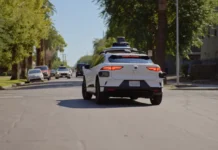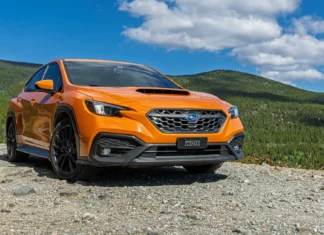
Pedestrian deaths on U.S. roads are rising.
As modern cars get more and more advanced safety equipment, pedestrian detection is a critical piece of automatic emergency braking systems. We’re used to cars that brake on their own upon seeing other vehicles, but the technology to spot pedestrians is still in its relative infancy. The Insurance Institute for Highway Safety (IIHS) recently rated the performance of 16 midsize cars based on their ability to spot pedestrians and brake before striking them. Last year, an estimated 6,283 pedestrians were killed in the U.S. 2018 saw the highest number of pedestrian and cyclist deaths since 1990.
IIHS crash prevention system ratings are broken up into “Superior”, “Advanced”, “Basic” or “No Credit”. As pedestrian detection systems become more commonplace on 2020 models, their testing found not all systems are equally effective. While some worked very well, others failed completely to spot a pedestrian dummy depending on the test.
The best (and worst) performers
Of the 16 contenders, four luxury and two nonluxury midsized cars earned a Superior rating. The Audi A4, BMW 3 Series, Volvo S60 and Mercedes-Benz C-Class all performed well, as did the Nissan Maxima and Subaru Outback. Six other cars earned an “Advanced” rating, including the Tesla Model 3, Honda Accord, Mazda6 and Toyota Camry.
At the other end of the spectrum, four nonluxury cars earn a Basic rating or scored no credit at all. The Chevrolet Malibu faired better than some with a Basic score with optional equipment. Although the Ford Fusion has pedestrian detection as standard, it completely failed to slow down in time to miss the pedestrian. The 2019 Hyundai Sonata and Kia Optima also earned no credit in IIHS testing.
IIHS tests include an adult crossing the road, a child crossing the road and an adult walking near the edge of the road. The tests are only done during the day on dry roads, as automakers don’t commit their technology to work as well at night. However, the IIHS does note in its statement that, “if paired with good-performing headlights, they should be able to detect pedestrians.”
Most fatal pedestrian accidents — 75 percent — occur at night, according to recent data. As the technology evolves, hopefully newer cars will be able to prevent those deaths, even in dark or inclement conditions.
Here is a complete breakdown of cars tested in the IIHS study:
- Superior rating:
- 2019 Audi A4 (standard equipment)
- 2019-2020 BMW 3 Series (standard equipment)
- 2020 Subaru Outback (standard equipment)
- 2019-2020 Mercedes-Benz C-Class (optional equipment)
- 2019-2020 Nissan Maxima (optional for 2019; standard for 2020)
- 2019 Volvo S60 (standard equipment)
- Advanced rating:
- 2019-2020 BMW 3 Series (optional equipment)
- 2019-2020 Honda Accord (standard equipment)
- 2019-2020 Lexus ES 350 (standard equipment)
- 2019 Mazda6 (standard equipment)
- 2019-2020 Nissan Altima (optional equipment)
- 2019-2020 Tesla Model 3 (standard equipment)
- 2019-2020 Toyota Camry (standard equipment)
- Basic rating:
- 2019-2020 Chevrolet Malibu (optional equipment)
- 2019-2020 Mercedes-Benz C-Class (standard equipment)
- No credit:
- 2019-2020 Ford Fusion (standard equipment)
- 2019 Hyundai Sonata (optional equipment)
- 2019 Kia Optima (optional equipment)























